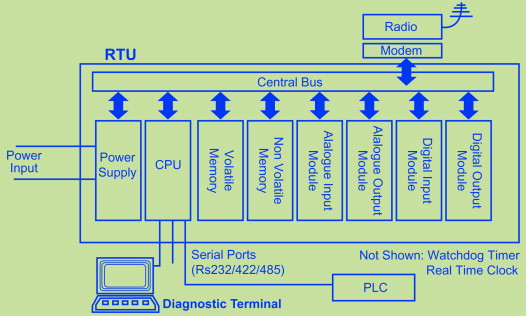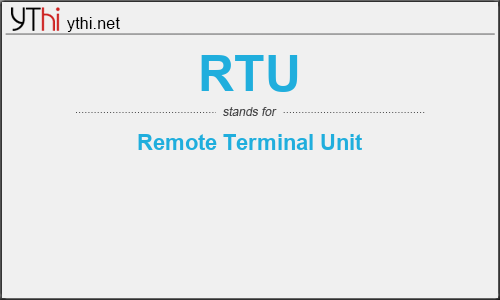What does RTU mean? What is the full form of RTU?
The full form of RTU is Remote Terminal Unit
RTUs are primarily stand-alone data acquisition and control units. A typical RTU configuration is shown in Figure 10.6, which includes the hardware modules such as control microprocessor and associated memory, analog inputs, analog outputs, counter inputs, digital inputs, digital outputs, communication and I/O interfaces, power supply, together with an RTU rack and enclosure. Small RTUs generally have fewer than 10 to 20 analog and digital signal inputs; medium-sized RTUs have 100 digital and 30 to 40 analog signal inputs. Any RTU with more signal inputs than this is referred to as large.
RTUs are used to convert electronic signals received from (or required by) field instrumentation into (or from) the communication protocol that is used to transmit the data over a network. RTUs appear in the field as a box in a switchboard with electrical signal wires running to field instrumentation and a cable linked to a communication channel interface, such as a telephone cable, a field bus, or a radio.
The instructions for the automation of field data interface devices are usually stored locally since the limited bandwidth typical of communication links to the SCADA central host makes central storage impractical. Such instructions are traditionally held within local electronic devices known as programmable logic controllers (PLCs), which have in the past been physically separate from RTUs. PLCs connect directly to field instruments and incorporate programmed intelligence in the form of logical procedures that will be executed in the event of certain field conditions. More recent systems have no PLCs and local control logic is held within the RTUs, or in relay logic in the local switchboard.

Remote Terminal Unit
RTU
means
Remote Terminal Unit![]()
Translate Remote Terminal Unit to other language.


Leave a Reply
You must be logged in to post a comment.